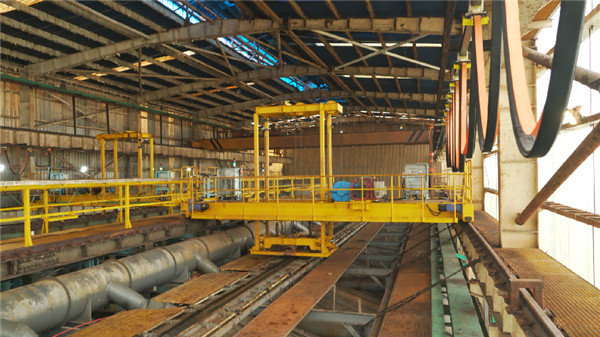Pickling:
According to a certain concentration, temperature and speed, acids are used to remove iron oxide skin chemically, which is called pickling.
Phosphating:
The process of forming a phosphate coating on the metal surface through chemical and electrochemical reactions. The formed phosphate conversion film is called a phosphating film.
Purpose: To enhance the anti-corrosion and anti-rust properties of the surface of the material. At the same time, the phosphate film formed as a lubricating carrier has a good reaction with the lubricant and reduces the surface friction coefficient of the subsequent processing of the material. Improve paint adhesion and prepare for the next step.
Saponification:
After the workpiece is phosphating, the stearate and zinc phosphate film layer in the solution immersed in the saponification bath react to form a zinc stearate saponification layer. Purpose: To form a saponification layer with excellent adsorption and lubricity on the surface of the material, so as to facilitate the smooth progress of the subsequent processing technology.

The method of pickling rust and scale is the most widely used method in the industrial field. The purpose of removing rust and oxide scale is achieved by the mechanical stripping effect of acid on oxide dissolution and corrosion to produce hydrogen gas. The most common ones used in pickling are hydrochloric acid, sulfuric acid, and phosphoric acid. Nitric acid is seldom used because it produces toxic nitrogen dioxide gas during pickling. Hydrochloric acid pickling is suitable for use at low temperatures, should not exceed 45 ℃, it should also add an appropriate amount of acid mist inhibitor. The pickling speed of sulfuric acid at low temperature is very slow, it is suitable to use at medium temperature, temperature 50 – 80 ℃, use concentration of 10% – 25%. The advantage of phosphoric acid pickling is that it will not produce corrosive residues, which is safer, but the disadvantage of phosphoric acid is higher cost, slower pickling speed, the general use concentration is 10% to 40%, and the processing temperature can be normal temperature to 80 ℃. In the pickling process, the use of mixed acids is also a very effective method, such as hydrochloric acid-sulfuric acid mixed acid, phosphoric acid-citric acid mixed acid.
The pickling line designed by Wuxi T-control is fully enclosed and automated. The production process is carried out in a closed tank and isolated from the outside world; the acid mist generated is extracted by the acid mist tower for purification treatment; the production process is isolated from the health of the operator Impact; automatic control, high production efficiency, large output, especially suitable for large output, centralized production; computer automatic control of process parameters, stable production process; compared with the previous pickling phosphating production line, greatly improved performance, but also extremely The earth reduces pollution to the environment.
Post time: Nov-23-2022
